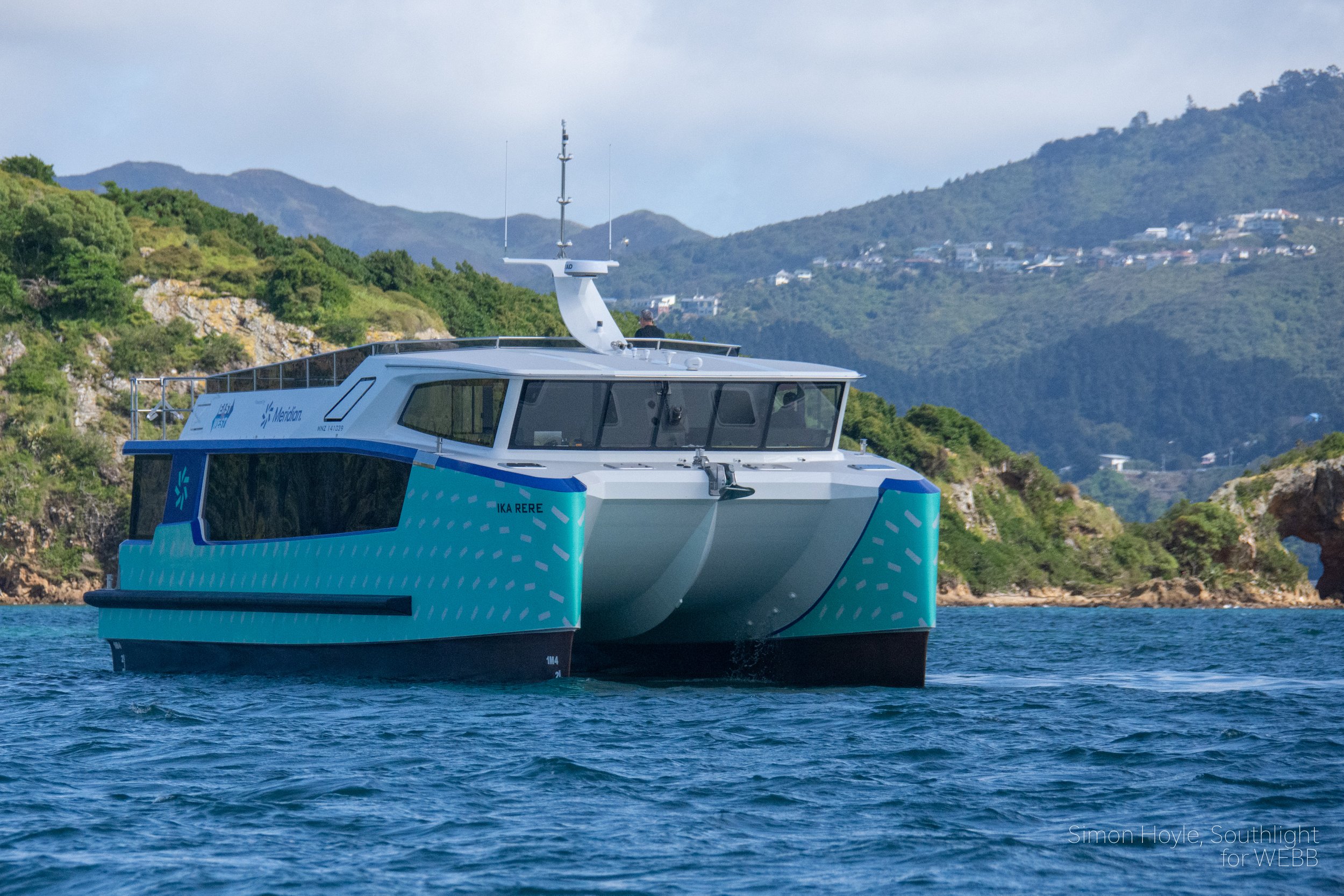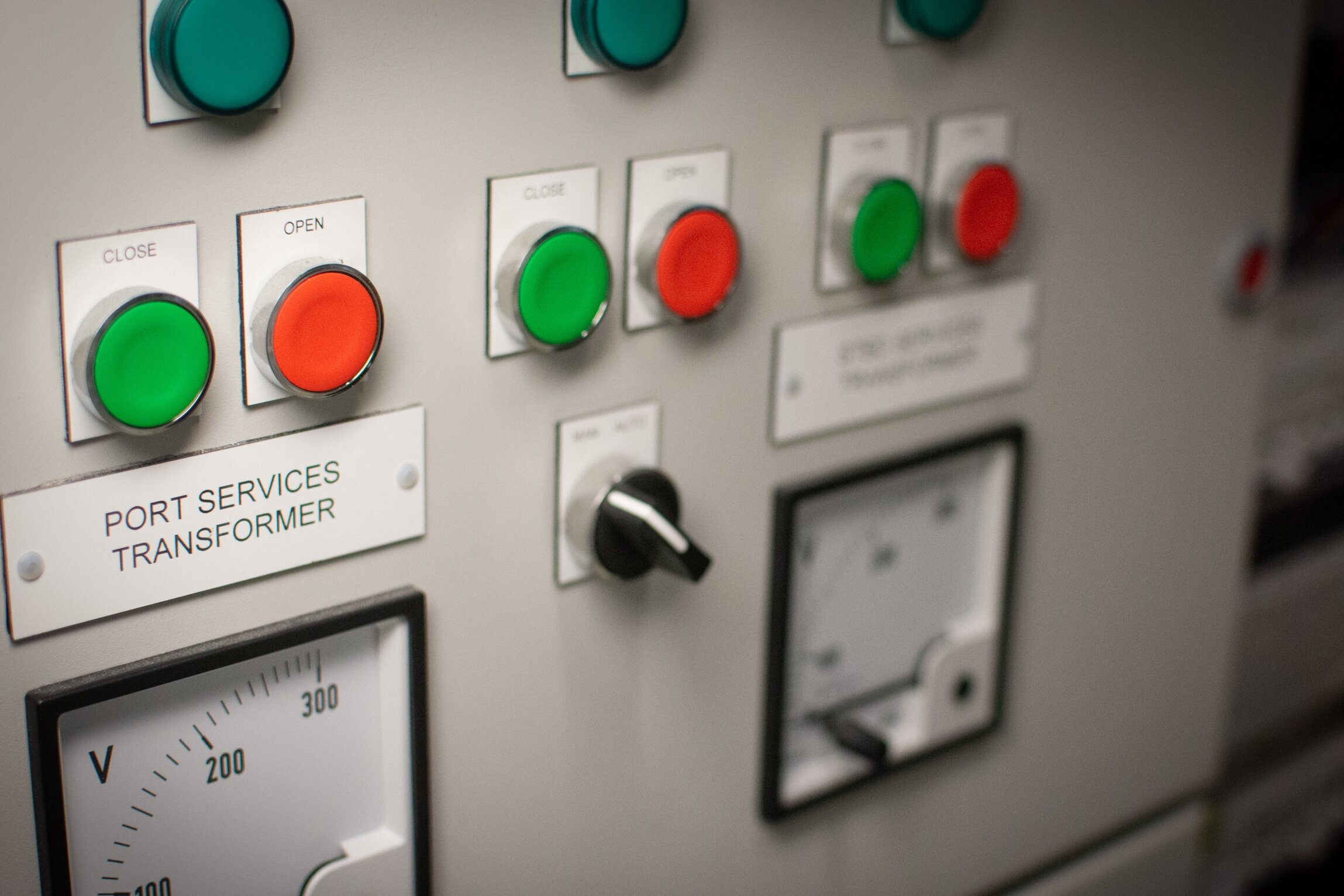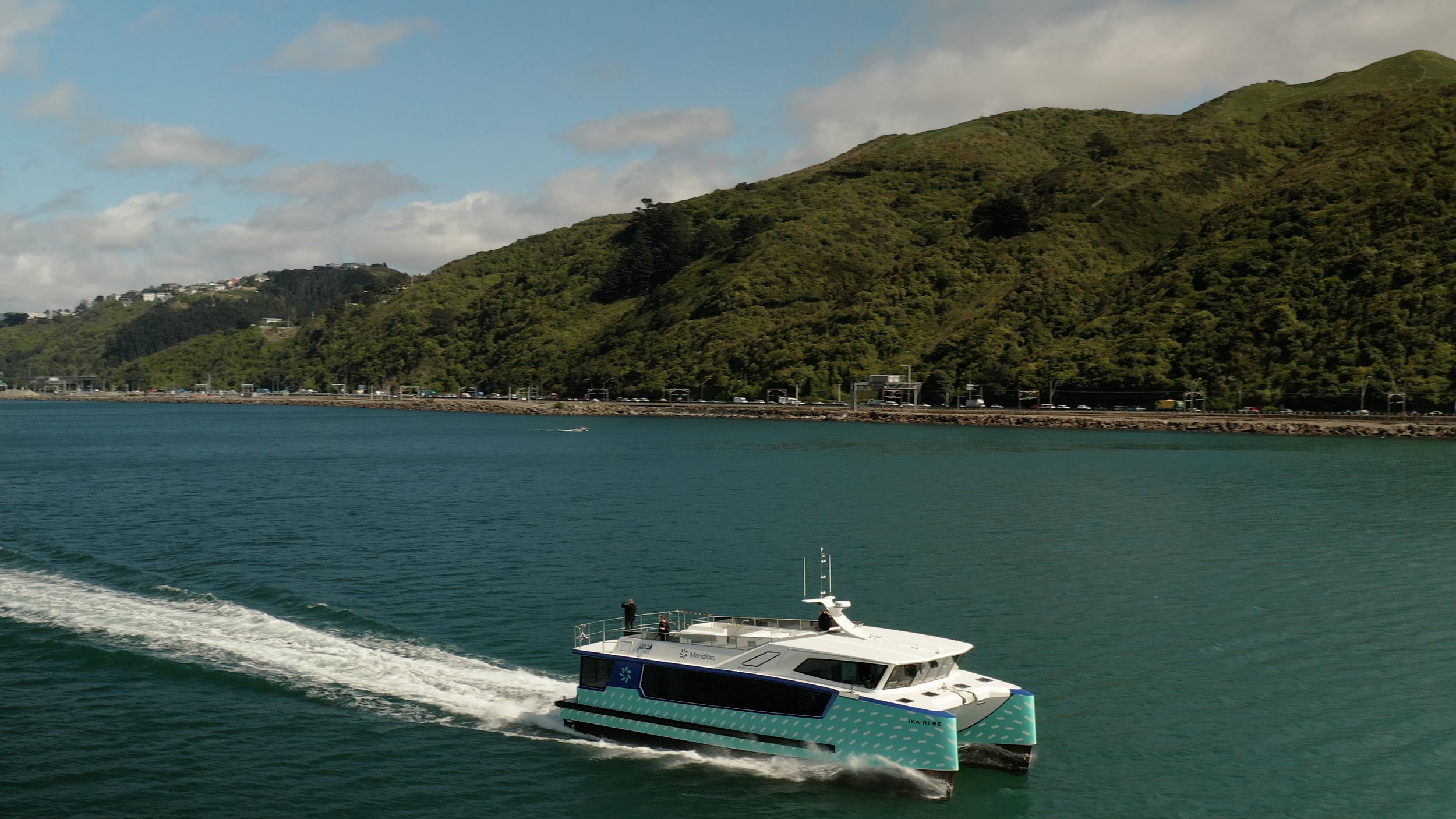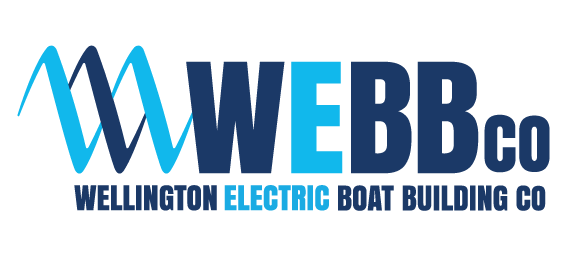EAST BY WEST 19m Ferry
This East by West 19m catamaran has a passenger capacity of 132 with 3 crew, an on-board café, 2 heads (capacity for 3), with inside and outside seating options. She will cruise effortlessly and almost silently across Wellington Harbour to and from Queen’s Wharf to Days Bay 7 times a day, providing customers with a comfortable, smooth and enjoyable journey.

m
Length overall
km
Route distance
knots
Operating speed
People
Maximum pax
“East by West has been running this route for over 30 years and we knew it was time to think outside the box with our next ferry upgrade. We had to put a stake in the ground and find a new solution that was going to tick all the boxes - including our responsibility to the environment. We knew it was time to be bold!”
Jeremy Ward, CEO East by West Ferries

Carbon emissions
kW
Energy demands
(fully laden at 20knots)
%
Reduction in propulsion energy costs
hrs
Maintenance-free operational hours
Intelligent battery management system
The electric propulsion and power management system was custom developed and designed to suit the route and charging infrastructure, and is the first of its kind in the southern hemisphere.
The advanced battery management system provides constant system supervision, providing safety functions as well as real-time system capacity and health data. The VCAM vessel control and alarm monitoring system provides the skipper with dynamic visual performance data - allowing them to make the best decisions in how to operate the vessel.
Energy-efficient hull design
Slender hulls, based on a canoe stern form, were designed to achieve minimum resistance, which in turn requires less energy (battery power) to move the vessel through the water.
Each hull accommodates one of two independent battery stacks and propulsion motors.
Low weight carbon composite construction
Vacuum-infused carbon fibre construction was selected to meet performance criteria, anticipated energy consumption and ensure longevity.
The hull bottoms were moulded; with the topsides and deck constructed using an innovative modular carbon fibre panel system for manufacturing efficiencies.
Charging Infrastructure
The charging rate was a significant consideration in the boat’s design, impacting areas such as hull size, battery specification, weight and displacement. Local electricity network capacity, access, viewshafts and aesthetics were equally important, as the charger is located in a highly pedestrianised heritage area with restaurants and waterfront walkways. The ferry has been designed and built to complete one return run of 25km before charging at the dockside at a rate of 1MW for 15 minutes. For the first year of operation, it will be charged from a 300kW charger at its overnight berth.
Built to global standards
The ferry is designed and built to Maritime NZ and DNV quality and safety standards for commercial operation of electric vessels.








